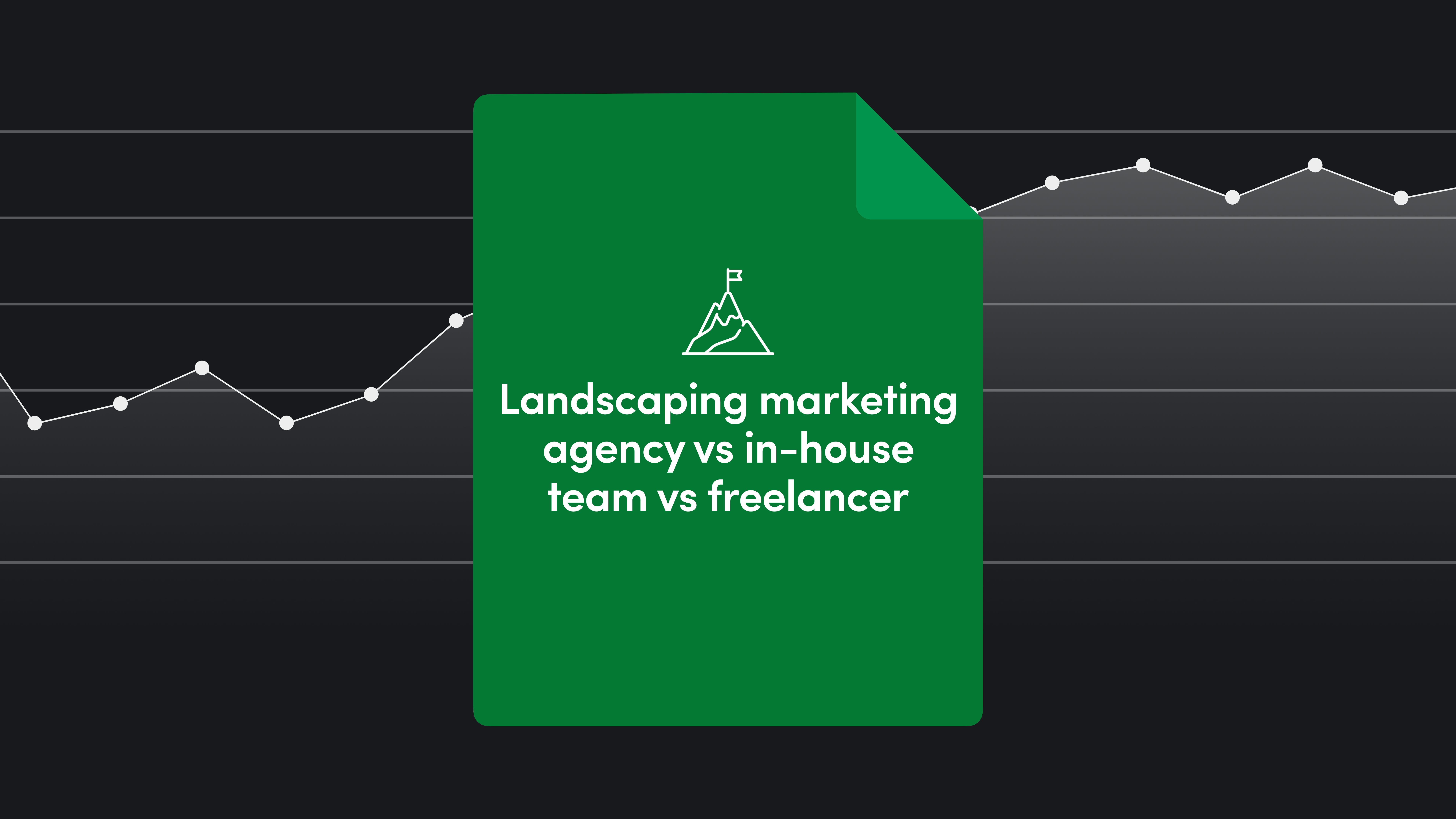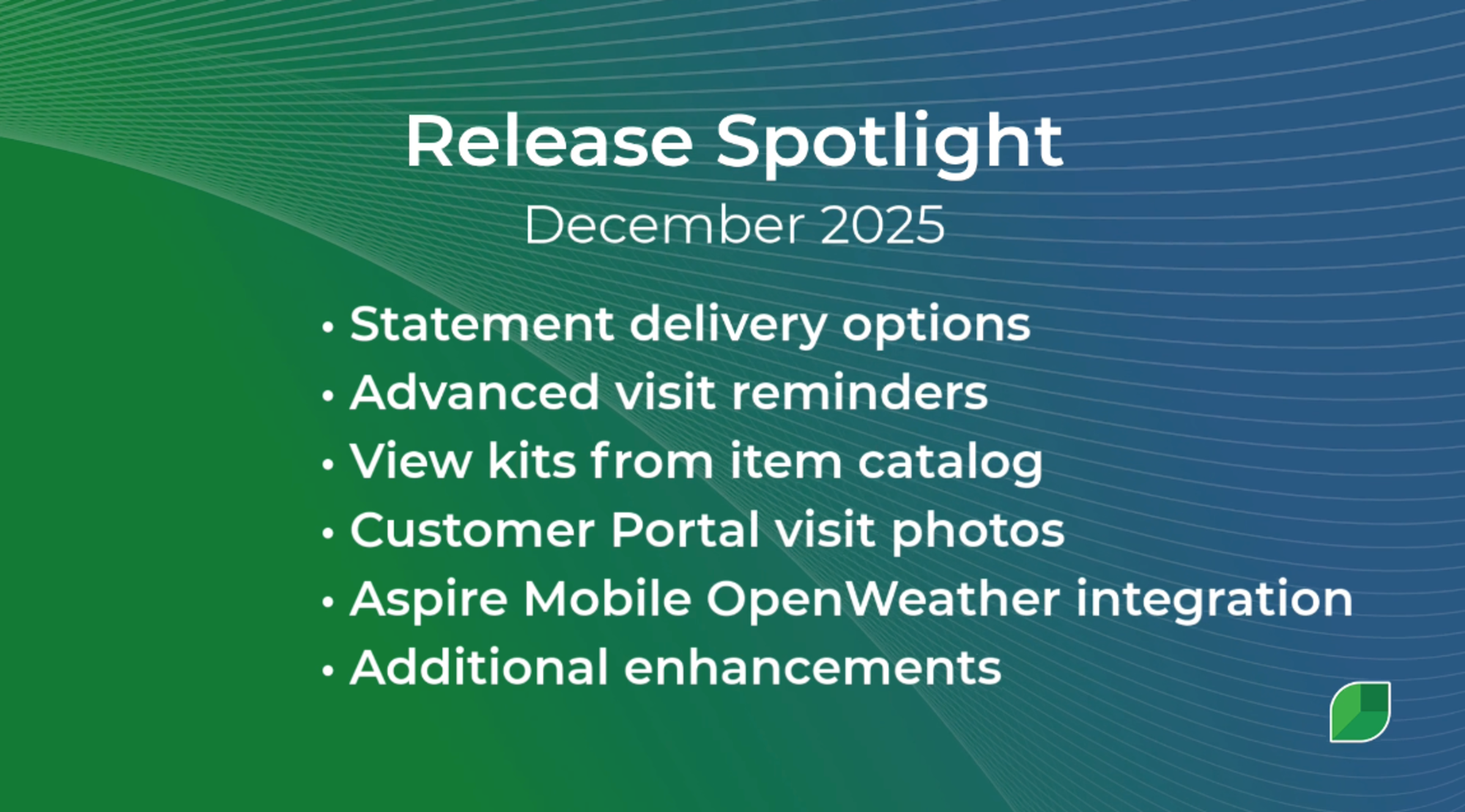Table of Contents
Table of Contents
- Scheduling landscaping jobs
- Scheduling landscaping jobs: Frequently asked questions
- How can I create a schedule for my landscaping jobs?
- What’s the best way to schedule landscaping jobs?
- What should I avoid when scheduling landscaping jobs?
- Why is it worth it to improve your landscaping schedule process?
- How to create a landscaping business schedule
- Use a scheduling template to structure your work tickets for scalability
- Optimized project management analyzes the organizational capacity of landscape contractors
- Use scheduling software
Schedules take a lot of work to manage. But in the landscaping industry, a tight and busy schedule is key to achieving profitability and growth.
Despite the challenges, many landscape business owners aim for the workload of a turbulent schedule. A bustling job calendar is a sign of a thriving business.
→ Your ability to land new jobs and schedule the work on your calendar is vital to pushing the success of your business.
Scheduling landscaping jobs
Scheduling is a unique problem. On the surface, it may seem a simple task, but the nuances involved can disrupt your workflow. Optimizing your scheduling process with software allows you to:
Visualize schedule capacity
Book more contracts
Quickly adapt to client needs
To achieve optimization, your team can’t work as siloed units, doing manual tasks and tracking schedules and work orders through old-fashioned whiteboards or spreadsheets.
Empower your landscaping company with the job scheduling tools and technology to elevate operations
To reach that enhanced level of scheduling, you need to make the right investments.
Resources
Tools
Strategies
This blog will review those investments and help you determine what your scheduling processes are missing to get to that next level.
Scheduling landscaping jobs: Frequently asked questions
Before diving in, let’s clear up some top-of-mind concerns you may be wondering. This should give you a good starting point before exploring further by ensuring you have a sturdy foundation in place on which to build.
How can I create a schedule for my landscaping jobs?
Your schedule should be facilitated in an internal shared space. This space should be an online resource where your entire team can:
→ Monitor incoming jobs
→ Visualize schedule openings for new work tickets
Even something as simple as a shared Gmail calendar could be a good place to start. Just ensure you can monitor your schedule months in advance and have clear insights into deadlines and openings.
What’s the best way to schedule landscaping jobs?
The best way to schedule a landscaping job is by attaching each estimate to the job in your calendar.
You don’t just want to schedule a start and end date. You want your schedule also to reflect the following:
How much of your crew will be tied up in work
What equipment will be needed
The required materials for the work
Being able to drill into work tickets from your schedule streamlines operations and provides instant job visualization for your entire team, from estimates to invoicing.
What should I avoid when scheduling landscaping jobs?
When booking landscaping work, you need to avoid loose or vague commitments.
→ Don’t book a job if you don’t know who or what will be needed to complete the contract
→ Especially avoid booking a job if you don’t know how it’ll affect your workload for the week
Why is it worth it to improve your landscaping schedule process?
Initially, booking landscaping jobs can be as easy as simply making a call and marking your calendar. But the green industry is volatile—complexities arise as your business increases in work.
A schedule improved to provide all the details your team needs to know about an upcoming job will help you grow your landscaping business and its service capabilities.
An optimized schedule will improve the following:
Client relationships
Profit margins
Consistency with recurring services
Route efficiencies for field crews
Timesheet tracking
Employee retention and morale
When you deliver excellence in your lawn care services, you need the right tools to support your operations, from mowers and blowers to software and mobile device capabilities.
How to create a landscaping business schedule
With the basics out of the way, here’s how to put your enhanced schedule into practice. Think of your landscaping schedule as an assortment of building blocks.
→ Each scheduling block is a different size and shape, and they don’t always build on each other.
If your foundation isn’t built from the largest and sturdiest pieces, you’ll never be able to scale your landscaping business to more complex and niche projects.
Use a scheduling template to structure your work tickets for scalability
So to start, you need to build a foundation to grow. Once you have an established process that optimizes your team’s ability to schedule and meet deadlines, you can enhance your services.
So, what are the criteria for building this foundation?
Project importance
When developing job management for your scheduling process, you must understand your methodology from top to bottom.
→ A first come, first serve business practice isn’t sustainable when work tickets pile up, and service diversity broadens.
Your schedule should reflect the value of each job or potential new job. Understanding each upcoming project's opportunities and profit potential will help you organize your calendar correctly.
You need to establish a ranking system for leadership to prioritize projects.
Consider using a ranking system akin to how the Eisenhower Matrix works. The Eisenhower Matrix uses a graph that tracks tasks based on the following:
Their importance and
Their urgency
One side of the graph represents importance, and the other represents urgency. This system can be put in place with any of your potential jobs.
Importance would represent factors such as:
Profitability
Size of job
Growth through enhancements and upsells
Viability
Urgency would be reflected through factors such as:
Returning client
Deadline
Availability of crew
Payout
Once you establish your logic, ensure your team is on board with the methodology.
This way, there will be no discrepancies in how you book jobs in the future, and your team will be ready to adapt to any or all incoming contracts.
Monitoring your bandwidth
Scheduling your landscaping jobs is about more than understanding:
How busy you are and
How available you are to take on more work
Your schedule is also a lifeline, giving you insight into the following:
How stacked your crew members are and
How much workload you can handle throughout the week
This is why your schedule should work hand in hand with your team bandwidth.
Optimized project management analyzes the organizational capacity of landscape contractors
A new job is more than just a set of dates on the calendar. It’s also a look into your capabilities.
Each job blocking time on your calendar should also block out the following:
The number of labor hours required
The supplies needed
The equipment scheduled
If a job is going to require a van to transport three crew members and your load of equipment, your schedule should inform the following:
You’re down three team members
The supplies substrates from inventory management
You’re down van and supporting equipment
Just because you have an opening for an hour of work doesn’t mean you have the availability to book that work.
Scheduling landscaping services isn’t just about unbooked blocks of time in the day.
Knowing most of your equipment or crew is tied up blocks away means you won’t be able to tackle any work in a one-hour opening slot productively.
→ You’d never know this if your schedule isn’t monitoring bandwidth.
Aspire’s scheduling software for landscaping businesses takes this all into account. Every scheduled job is tied to the following:
A property
An estimate
Using the estimates, the schedule informs managers of the resources, the amounts each task will require, and exactly where those resources will be located throughout the day.
Optimize your routes
With your schedule processes aligned, the next step is to enhance how you schedule. The way you get to and from projects can go a long way in keeping your:
Fleet at peak efficiency
Bandwidth balanced
Availability maximized
To do this, focus on visibility in building your schedule.
Landscape management software provides scheduling visibility to every user
From a comprehensive dashboard, it should be easy to see where your crews need to be. If your schedule can provide insight into all the properties you have to visit throughout the week, route optimization becomes part of how you schedule transportation.
Implement standardized field service management practices for routes by reducing arrival times by routing crews by location distance.
Start with the nearest location at the top of the schedule
Schedule the following nearest location
Continue scheduling by closest location
This strategy avoids back and forth across service areas and will:
Cut down on transport costs
Get your teams routed quicker
Optimize your crews’ bandwidth
Lawn care software for scheduling enables operations managers to find new efficiencies in every aspect of operations.
Ensure contractors know their schedules
Visibility needs to go beyond your team leads. You want your crews to have just as much insight into their upcoming workload.
→ There’s nothing worse to team morale and productivity than not knowing your upcoming workload.
To ensure visibility from top to bottom, make sure your schedule system includes the following:
Shared accessibility between teams
Communication features that alert upcoming crews to jobs
Time management features for progress updates
The type of communication this system requires goes beyond emails or text messages.
Software notifications ensure the right information gets to the right team member.
When you implement software designed for service businesses, go get real-time information related to:
Upcoming jobs
Geo-tagged clock-in and clock-out
Issues recorded by field crews
When your entire team embraces and fully utilizes an integrated software platform, it:
Increases productivity
Improves accountability
Facilitates adaption to change
But this strategy requires technical investment to achieve fully–which is why you should look into management software designed for the landscaping industry.
Use scheduling software
By now, it should be clear. An optimized scheduling process isn’t sustainable without the right tools.
If you’re overloading your management teams to achieve a fully enhanced schedule system, you’re working backward.
→ A schedule management system should ease your organization's workload, not increase it.
So what does scheduling software achieve that makes it worth the investment?
Flexibility
Landscape business software creates an easy-to-adapt system. The right tools provide visibility and management functionality responsive to your team’s needs.
The visibility delivers insight into when teams are at risk of overbooking or when sudden issues arise.
Aspire’s landscaping software platforms empower flexibility that makes it easy to problem solve and adapt with drag-and-drop functionality. Your operations team can quickly schedule recurring jobs and handle changes brought on by weather or customer requests.
Performance
Scheduling and performance may not seem like a typical pairing, but the power behind these combined insights is essential for growth.
An online system provides reporting on performance factors such as:
Met or missed deadlines
Actual time spent on a project
The resources it took to complete the job
How quickly you met the expected timeline
Business software that records and visualizes historical performance data helps improve profitability for landscapers by providing critical data to:
Price work accordingly
Identify profitable services
Find cost-reduction opportunities
The right software will do more than just make daily tasks easier; it’ll improve your bottom line.
Client communication
An online tool should be able to connect not only your organization internally but externally. If you have a sudden issue or need to reschedule a recurring job, it should be easy to inform clients of the incoming changes quickly.
Using Aspire’s customer portal, your clients can:
Send messages to your team
Raise issues about current, upcoming, or completed work
Pay invoices with credit card or ACH bank transfers
Sign new contracts
The robust client and property CRM keeps a record of communications, making it easy to reference prior communications, estimates, and completed work.
Try a demo first
Knowing what you need to build your scheduling system is one thing, but seeing it in action is another.
Aspire’s cloud-based software solution deploys the management tools required to align these strategies into one cohesive scheduling platform.
Supercharge your journey to growth by bringing every aspect of your workflow into a single platform, including:
Routing
Cost forecasting
When you’re ready to see how software designed for landscapers can make a difference in your operations, schedule a demo. Or, use our ROI calculator to see how Aspire does more than other scheduling apps on the market by finding new profitability in your existing bottom line.










